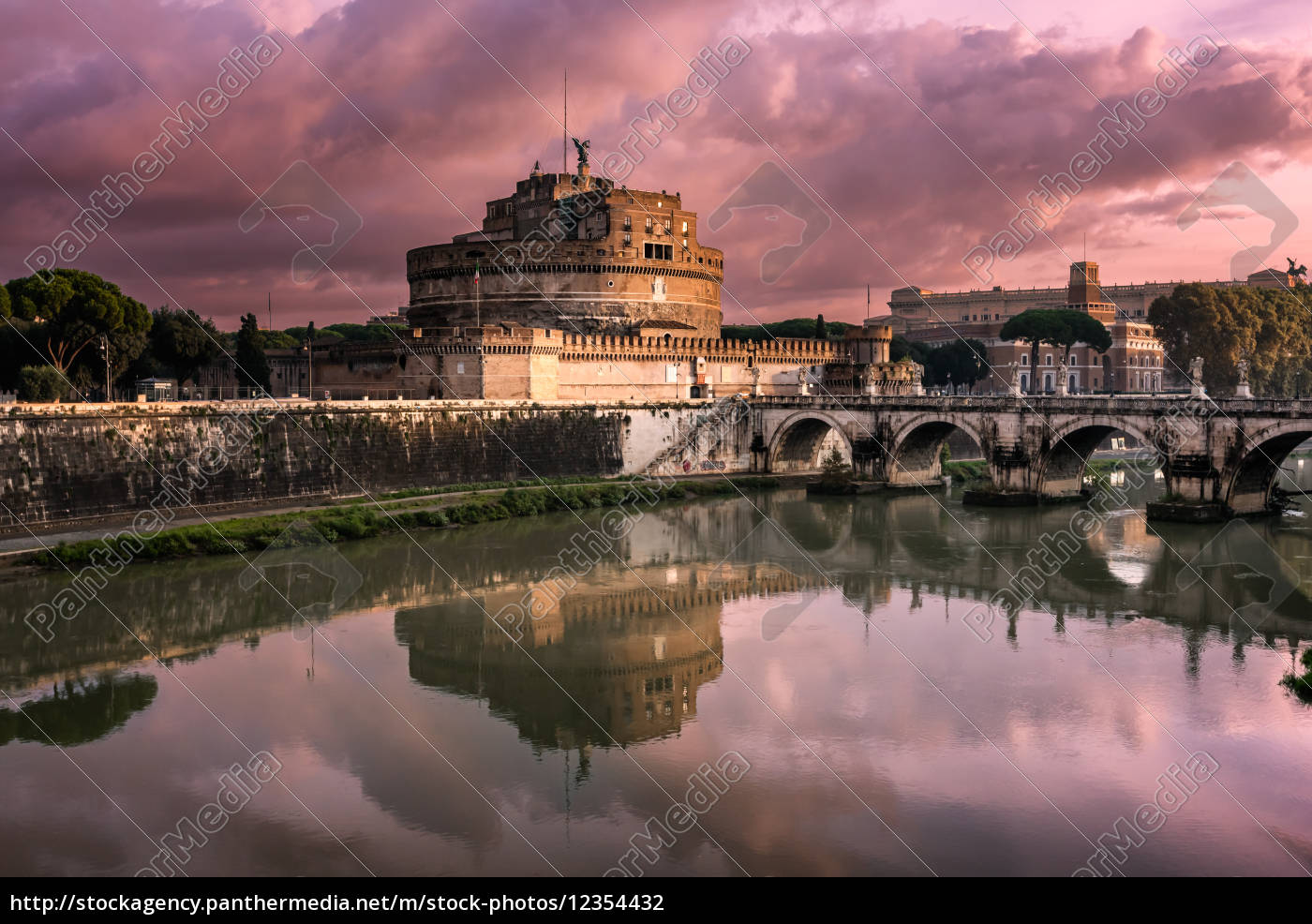
The Mausoleum of Hadrian known as Castel Sant Angelo Lizenzfreies Foto 12354432
Mausoleum of Hadrian was built on the right bank of the Tiber, a short distance from the Mausoleum of Augustus. Its construction began around 130 CE. The tomb consisted of a huge rotunda 21 m high and 64 m in diameter and a square fence covered with precious marbles.
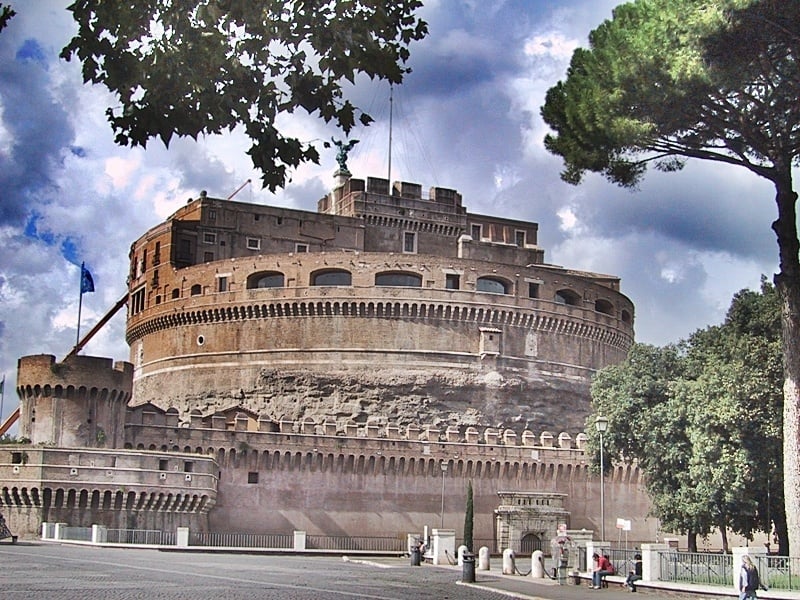
Castel Sant'Angelo Hadrian's Mausoleum Archaeology Travel
Official Name: Castel Sant'Angelo, also known as Mausoleum of Hadrian. Location: Lungotevere Castello, 50, 00193 Roma RM, Italy Architect: Believed to have been designed by Emperor Hadrian himself or his architects. Date of opening: The Mausoleum of Hadrian, which later became Castel Sant'Angelo, was completed in 139 AD. Function: Museum
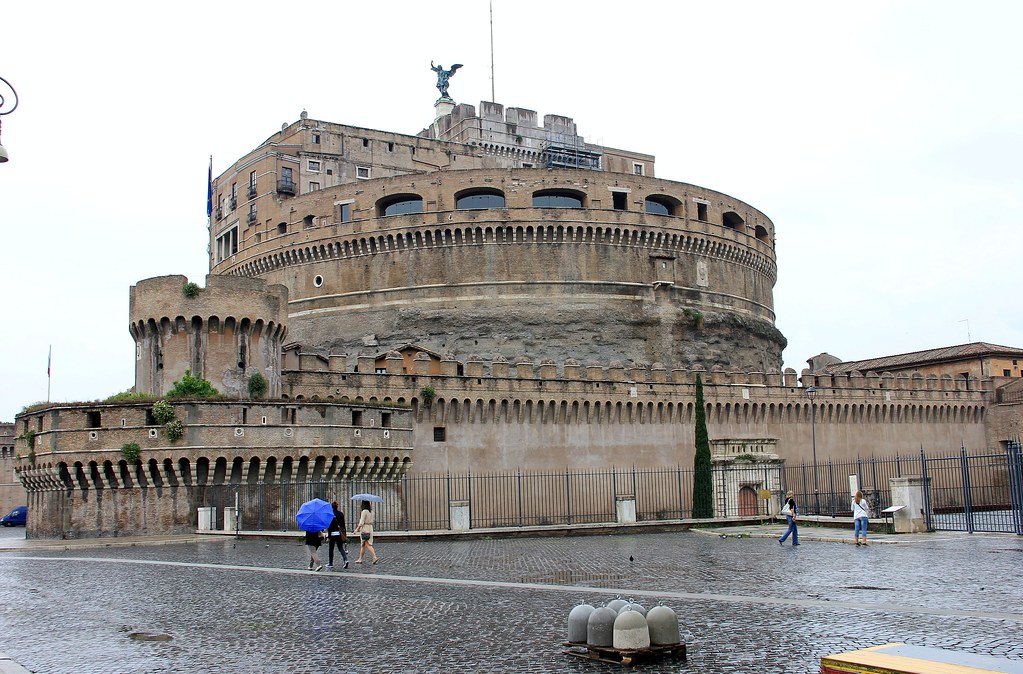
Mausoleum of Hadrian/Castel Sant'Angelo Flickr
The Mausoleum of Hadrian is a Roman architectural tour de force that attracts nearly 7.1 million tourists each year. An all-in-one representation of Rome's archaeological heritage, the Mausoleum of Hadrian evolved from a tomb to a military fortress and a palace.

Mausoleum of Hadrian (Castel Sant’Angelo) · Piranesi in Rome
The Mausoleum of Hadrian - Saint Angel Castle Located on the right bank of the Tiber, a few steps from the Vatican which it is connected to by the " Passetto di Borgo ", Castel Sant'Angelo, also known as "Mole Adriana" and Mausoleum of Hadrian, is one of the most famous and visited monuments in Rome.
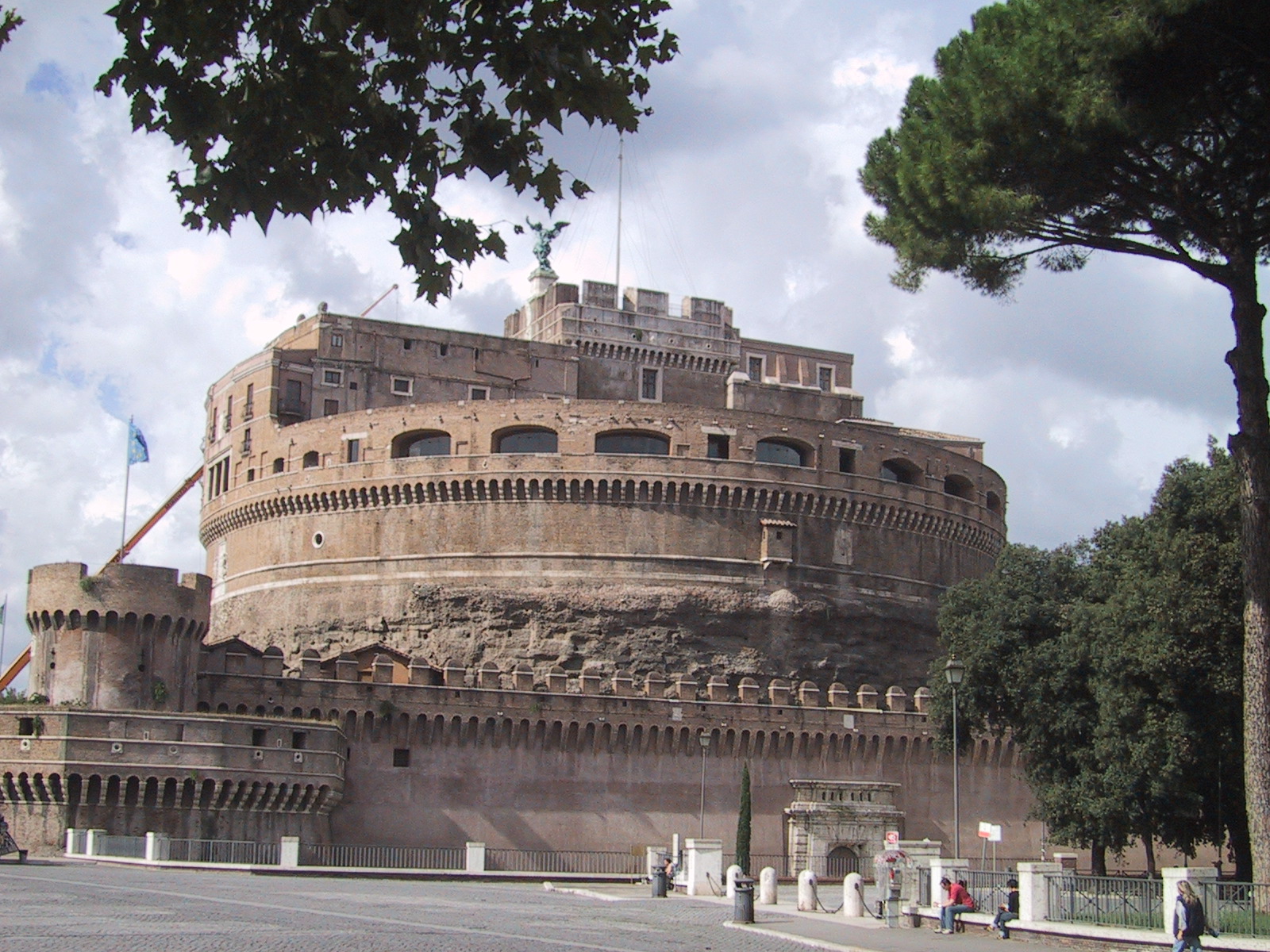
FileRoma Hadrian mausoleum.jpg Wikimedia Commons
Castel Sant'Angelo, also called Hadrian's Mausoleum, is a grandiose decorated cylindrical building. It was originally commissioned by the Roman emperor as a tomb for himself and his family. Built in: 123-139 d.C. Ordered by: the Emperor Hadrian

The Mausoleum of Hadrian, usually known as Castel Sant'Angelo, is a towering cylindrical
It is clear that Hadrian built it for a number of reasons: the Mausoleum of Augustus had as Dio tells us, run out of space for imperial burials, but Hadrian, like Augustus, was eager to put his stamp on Rome. His Mausoleum served as an imperial burial ground until Caracalla's burial there in 217.

Mausoleum of Hadrian Rome, 135138. The Mausoleum of Hadrian, known as Castel Sant'Angelo, w
Castel Sant'Angelo in Rome was originally constructed as the magnificent Mausoleum of Hadrian, the fourteenth emperor of Rome from 117AD to 138AD. History of Castel Sant'Angelo. It is unclearly as to exactly when Castel Sant'Angelo was built, but most sources date it to between 134 and 139 AD. Hadrian's ashes were deposited here.
The Mausoleum of Hadrian in Rome, Italy (Photo credit to Tatjana Djukic) [4032 x 3024] wallpapers
Castel Sant'Angelo, also known as Hadrian's Tomb, which is a fortress located by walking across the Ponte Sant'Angelo. A magnificent sight in itself as you will be able to admire Bernini's work, with ten white marble angel statues on either side of the bridge. However, these statues were placed here during the end of the 17th century.

The Mausoleum of Hadrian, usually known as Castel Sant'Angelo a towering cylindrical building in
That Hadrian built his mausoleum to intentionally recall the great funerary monument of Augustus, which is just across the river. But Hadrian's was even more beautifully decorated with marble, with travertine, with sculptures. Like so many ancient buildings in Rome, the Castle Sant'Angelo was robbed of its decorative marble, its sculpture.

The mausoleum of Hadrian in Rome HighQuality Architecture Stock Photos Creative Market
The mausoleum was started around the year 130 A.D. and completed in 139, one year after the death of Emperor Hadrian (117-138 A.D.). It stood on the right bank of the Tiber and could be accessed from Campus Martius through Ponte Elio (Pons Aelius), today Ponte Sant'Angelo. It consists of a square pedestal and a circular construction (drum.

he Mausoleum of Hadrian, usually known as Castel Sant'Angelo, is a towering cylindrical building
Dr. Paolo Vitti March 31st at 7:30 p.m. The Memorial Art Gallery, M&T Bank Ballroom Free and Open to the Public. This lecture presents a new architectural analysis on the Mausoleum of Hadrian in Rome, whose internal distribution and exterior appearance has remained an enigma for scholars studying the ancient architecture of the city of Rome.

Hadrian Mausoleum on the Tiber in Rome Hadrian's Mausoleum… Flickr
The Mausoleum of Hadrian, also known as Castel Sant'Angelo ( Italian pronunciation: [kaˈstɛl sanˈtandʒelo]; English: Castle of the Holy Angel ), is a towering rotunda (cylindrical building) in Parco Adriano, Rome, Italy. It was initially commissioned by the Roman Emperor Hadrian as a mausoleum for himself and his family.

The Mausoleum of Hadrian in Rome Photograph by CosminConstantin Sava Pixels
Inscription inscribed on the mausoleum of Hadrian. Probably set up in 139 CE. The inscription is now lost. Imperator Caesar Aelius Hadrian Antoninus Augustus Pius, pontifex maximus, twice holder of tribunican power, twice consul, three times consul designate, Father of his country, for his parents, Imperator Caesar Hadrian Augustus, son of.
The Mausoleum of Hadrian, build in 123139 CE as a Mausoleum for the Roman Emperor Hadrian and
Built as the tomb of the mighty Emperor Hadrian, the Castel Sant'Angelo has seen an astonishing amount of bloodshed, turbulence, and change in the millennia since. From fleeing popes and secret passages to executions and medieval prisons: the Castel Sant'Angelo takes up a fascinating place in Rome's history.
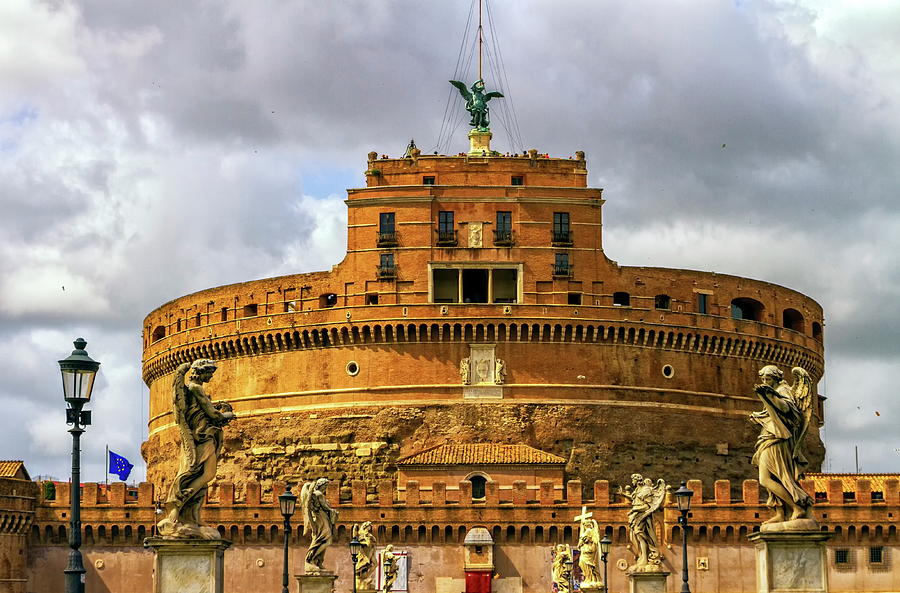
Castel Sant'Angelo or Mausoleum of Hadrian, Rome, Italy Photograph by Elenarts Elena Duvernay
Mausoleum of Hadrian, also known as the Castel Sant'Angelo, is a monument of ancient Rome, located on the right bank of the Tiber. Learn more.

Mausoleum of Hadrian known as Castel Sant'Angelo, Rome, 135138. The walls and the watch
The Mausoleum of Emperor Hadrian, usually known as Castel Sant'Angelo (Castle of the Holy Angel), has a grand view and impressive history.During its long existence, built at the dawn of Christianity on the banks of the Tiber, the cylindrical mausoleum was the last refuge for the Roman emperor, the residence of pontificals, fortress, then prison, and later - the museum and treasury.